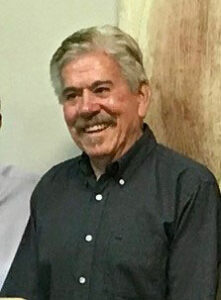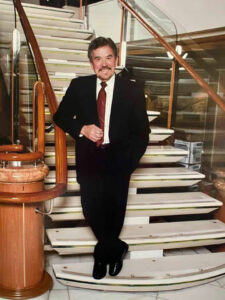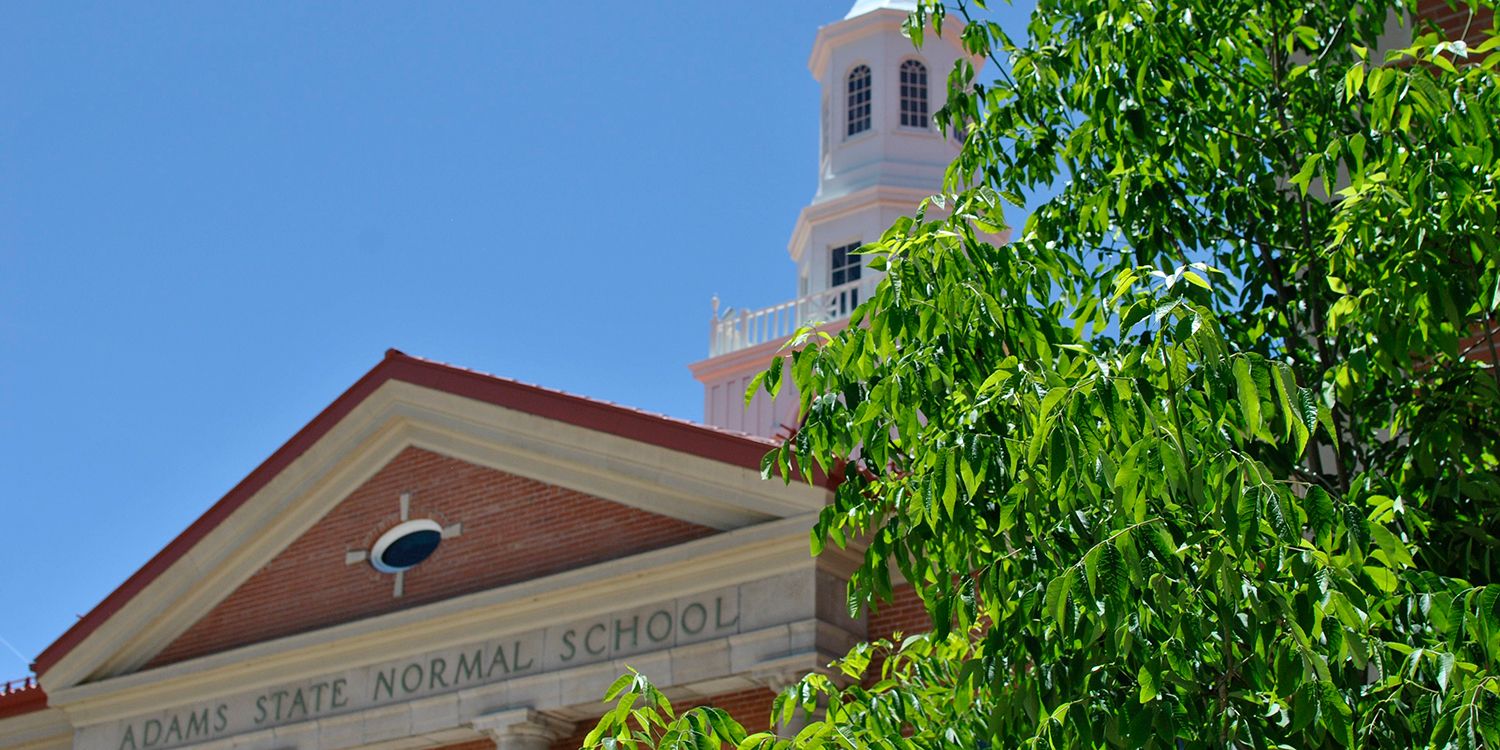 William Manzanares epitomizes the Adams State can-do spirit. A native of San Luis, Colo. Manzanares graduated from Adams State in 1967 and then earned a Master of Science in physics from CU in 1976. He went on to have a 27-year career with the Central Intelligence Agency and earned CIA’s Distinguished Career Intelligence Medal, CIA Diversity Champion award, and was twice nominated for CIA Scientist of the Year. Here is our interview with this year’s Adams State University Outstanding Alumnus.
William Manzanares epitomizes the Adams State can-do spirit. A native of San Luis, Colo. Manzanares graduated from Adams State in 1967 and then earned a Master of Science in physics from CU in 1976. He went on to have a 27-year career with the Central Intelligence Agency and earned CIA’s Distinguished Career Intelligence Medal, CIA Diversity Champion award, and was twice nominated for CIA Scientist of the Year. Here is our interview with this year’s Adams State University Outstanding Alumnus.
ASTATER: Can you describe your proudest achievement?
WILLIAM MANZANARES: Making it from being a poor farm boy, growing up just outside of a small town in a remote corner of the San Luis Valley, to having a fulfilling career where I had the opportunity to contribute to my country on a national scale. I got to do things and view the world in ways which very few people get the chance to do. It was a fascinating ride and in many ways far beyond my childhood expectations. I am equally proud to have such a great family – my wife, two children and two grandchildren.
ASTATER: What is the biggest challenge you overcame?
WM: Self-doubt. Through school and my early career, I began to know myself better and confidence in my own capabilities grew progressively. As an example, one of my most challenging work assignments came in early 1989 when, as the chief scientist for my group, I was given the task of solving a very complex engineering problem in the development of an advanced technology satellite deemed of the “highest national importance.” This task involved assembling a team of nationally renowned experts from industry and the universities to help me, as well as having to brief upper agency management every week on the progress made. It was a daunting task with many agonizing days for me, but the problem was eventually solved without impacting cost, schedule or the performance of the satellite – all of which were closely monitored by Congress.
ASTATER: Do you have any advice for current/prospective students considering the field of science?
WM: Science is difficult to prepare for as a life career. There are many rewarding jobs in science, but students must first have a passion for doing related work and a strong personal commitment to preparing for it. Those who approach science half-heartedly will not make it because of the long preparation needed. In addition to extensive preparation in math, for example, science students have to develop their critical thinking, problem solving and analytical skills extensively. Equally important, science students and professional alike must develop their communications skills as early as possible, notably for writing and oral presentations.
ASTATER: In your opinion what are the advantages of attending and graduating from a small, rural institution in today’s world?
WM: I value my ASU education because classes were relatively small and students generally received more personalized attention than might be possible in larger universities. In addition, the faculty at ASU were world class professors in their respective fields. An added bonus – it was easier to meet students from other parts of Colorado, the U.S. and around the world than it would have been at a larger university. For someone coming from a very small high school, enrolling at Adams State eased the transition for me considerably.
ASTATER: Is there a favorite Adams State moment from your student days you would like to share?
WM: When Moe Morris, Ph.D., asked me to be a lab assistant for his beginning physics classes. It was an opportunity to meet other students and learn important experimental aspects of a science education. Dr. Morris and his wife were both very gracious in sharing their home and family life with us, and it made me appreciate early that science and family life do co-exist after all.
ASTATER: What are the biggest factors that you believe contributed most to success in your life?
WM: I grew up in the 1950s when the pace of science and technology development was very rapid. The space-race competition between the USSR and the U.S. caught my attention. I decided to pursue science as a career with the expectation that I would later find my way into work related to space. Having a dream was not enough – I had to work hard and be persistent. Along the way, I found that there were many people who were willing to help me achieve my educational goals and I attribute that help from teachers, family, and friends as one of the most important factors contributing to my successes.
ASTATER: What was your approach in taking on “stretch” assignments on those occasions where you may have felt unprepared for the job?
WM: I learned early in my career with the Agency that staying in one job with one organizational unit for a long time was probably not career enhancing. As the years went by and I got assignments of increasing responsibility, I learned more and more about the Intelligence Community and got the opportunity to contribute to a broader set of national intelligence priorities, rather than being a specialist in a narrowly defined area. Each time, I found that I had to learn many aspects of the new job, but that there were always opportunities for learning and contributing. In taking stretch assignments, my approach was to ask plenty of questions, readily accept help from others and act with integrity in all matters.
ASTATER: How important is continuing education and learning in one’s career after academia?
WM: I’m a strong believer that none of us are ever finished with learning. In my career, I’ve taken numerous short courses to enhance my technical knowledge in specific areas where further learning was necessary to do my job more effectively. I’ve taken senior management courses at Harvard University, the Aspen Institute and others. I’ve always been inspired by Alvin Toffler, the noted American writer and futurist who said: “The illiterate of the 21st Century will not be those who cannot read and write, but those who cannot learn, unlearn and relearn.”
ASTATER: How did you meet the competing demands of work and family for your time and attention?
WM: Since my wife and I both worked outside the home throughout our careers, we found early during our child-rearing years that teamwork between us was absolutely essential. We both managed the work-family demands by informing our respective managers of our need to arrive at or leave work as dictated by our family care situation. Nowadays, working couples still face the same challenges, although more favorable family-friendly policies are evolving.
William Manzanares
At a Glance

Born and raised in San Luis, Colo.
Education
- 1967 Undergraduate Degree from Adams State College
- 1976 Master of Science in physics from University of Colorado Boulder
- Doctoral work in physics
U.S. Air Force
- 56th Special Operations Wing Aircraft Weapons Specialist
- Awarded the Air Force Commendation Medal
- 1972 Honorably Discharged
Career
- St. Edward’s University in Austin, Texas
- 27 years with Central Intelligence Agency (CIA) in Washington, D.C.
- After 10 years, promoted to the Senior Intelligence Service
- Led science and technology initiatives involving multiple CIA organizational units, external government agencies and national laboratories
- Directly supported the mission of the National Reconnaissance Office (NRO), the organization responsible for the development and operations of all U.S. space surveillance systems; evaluations of the results of these efforts were published internally and formed the impetus for subsequent improvements in selected U.S. technical intelligence capabilities
- Booz Allen Hamilton, an international consulting firm doing contract work for U.S. defense, intelligence and civil agencies
Key Accomplishments
- 1997 assist the newly formed National Imagery and Mapping Agency; served for several years as a member/advisor of its National Research and Development Council
- One of three principal members responsible for guiding the development of a joint program of the Air Force Research Lab, National Aeronautics and Space Administration (NASA) and the NRO from 1998 to 2002, a pioneering effort which ultimately resulted, in part, in the development of a critical technology for NASA’s James Webb Space Telescope
- CIA member of the Executive Board for the Journal of Intelligence Community Research & Development, a classified online technical publication established to share R&D results within the Intelligence Community (fulfilling his dream of working on, and advancing America’s space programs)
- Dedicated mentor: recruiting, developing, and retaining new personnel
- Senior member of career panels and recognition and awards boards charged with promoting people, assigning them to key jobs and recognizing them for their accomplishments
Awards
- CIA’s Distinguished Career Intelligence Medal
- NRO Pioneering Spirit Team Award
- CIA Diversity Champion Award
- NRO Director’s Circle Award
- NRO Medal of Distinguished Performance
- Twice nominated for the CIA Scientist of the Year Award
Credits his strong liberal arts education at Adams State as the early foundation for much of his successes and two inspirational professors: Moe Morris, Ph.D. in physics, and Kay Watkins, Ph.D. in chemistry. He and his wife, Rita Jaramillo, have visited 46 states, 48 countries and six of the seven continents.



